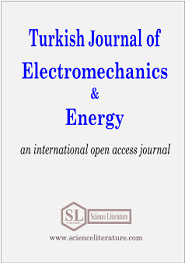
Implementing deep learning techniques for travel time prediction
Abstract
In recent years, deep learning (DL) has proved to be a powerful artificial intelligence prediction tool in solving many complex problems. Despite its demonstrated superiority over traditional approaches in various domains, the utilization of DL for traffic prediction remains limited. Nevertheless, prior studies have shown its potential and effectiveness in this area. As for travel time, DL can make accurate predictions for all segments in the transportation network with a single model structure. This study reports on the application of DL in simultaneously predicting the travel time over several segments of a network. Two DL models, namely multilayer perceptions (MLPs) and long-short term memory networks (LSTM), which can deal with high-dimensional input data, are proposed to tackle the problem. The outcome of the application of the two DL models in Amman city, the capital of Jordan, is presented in this study. Amman City Taxi Company provided a dataset containing information such as trip origin, destination, and travel time, for taxi trips over the years 2018 and 2019. The results demonstrate that DL models hold great promise in achieving precise and real-time prediction of travel time on a network-wide level.
Full Text:
PDFReferences
E.I. Vlahogianni, M.G. Karlaftis, and J.C. Golias, “Short-term traffic forecasting: Where we are and where we’re going,” Transportation Research Part C: Emerging Technologies, 43(1), pp. 3-19, 2014.
W. Huang, G. Song, H. Hong, and K. Xie, “Deep architecture for traffic flow prediction: Deep belief networks with multitask learning,” IEEE Transactions on Intelligent Transportation Systems, 15(5), pp. 2191–2201, 2014.
R. Fu, Z. Zhang, and L. Li, “Using LSTM and GRU neural network methods for traffic flow prediction,” in Proccedings of the 31st Youth academic annual conference of Chinese association of automation (YAC), Wuhan, China, 11-13 November 2016, pp. 324-328.
Y.J. Wu, F. Chen, C.T. Lu, and S. Yang, "Urban traffic flow prediction using a spatiotemporal random effects model,” Journal of Intelligent Transportation Systems, 20(3), pp. 282–293, 2015.
J. Rice and E. vanZwet, “A simple and effective method for predicting travel times on freeways,” IEEE Transactions on Intelligent Transportation Systems, 5(3), pp. 200–207, 2004.
N. Polson and V. Sokolov, “Deep learning predictors for traffic flows,” arXiv preprint arXiv:1604.04527, 2016.
D. Park and L. R. Rilett, “Forecasting freeway link travel times with a multilayer feedforward neural network,” Computer-Aided Civil and Infrastructure Engineering, 14(5), pp. 357–367, 1999.
N. Wisitpongphan, W. Jitsakul, and D. Jieamumporn, “Travel time prediction using multi-layer feed-forward artificial neural network,” in Proceedings of the 2012 Fourth International Conference on Computational Intelligence, Communication Systems and Networks (CICSyN 2012), Phuket, Thailand, July 24-26, 2012, pp. 326-330.
Google Maps, [Online], Available: https://www.google.com/maps [Accessed: Sept. 12, 2024].
G. Huang, J. Xing, L. Meng, F. Li, and L. Ma, “Travel time prediction for bus rapid transit using a statistics-based probabilistic method,” in Proceedings of the 2010 2nd International Conference on Signal Processing Systems (ICSPS), Dalian, China, 05-07 July 2010, pp. V1-457–V1-460,
Y. Duan and F. Wang, “Travel time prediction with LSTM neural network,” in Proceedings of the 2016 IEEE 19th International Conference on Intelligent Transportation Systems (ITSC), Rio de Janeiro, Brazil, 2016, pp. 1053-1058.
D. Wang, Y. Wu, and Z. Xiao, “A Gaussian process regression method for urban road travel time prediction,” in Proceedings of the 2017 13th International Conference on Natural Computation, Fuzzy Systems and Knowledge Discovery (ICNC-FSKD), Guilin, China, 29-31 July 2017, pp. 890-895,
H. Rodriguez-Deniz, E. Jenelius, and M. Villani, “Urban network travel time prediction via online multi-output Gaussian process regression,” in Proceedings of the 2017 IEEE 20th International Conference on Intelligent Transportation Systems (ITSC), Yokohama, Japan, 16-19 October 2017, pp. 1-6.
Y. Liu, Y. Wang, X. Yang, and L. Zhang, “Short-term travel time prediction by deep learning: A comparison of different LSTM-DNN models,” in Proceedings of the 2017 IEEE 20th International Conference on Intelligent Transportation Systems (ITSC), Yokohama, Japan, 16-19 October 2017, pp. 1-8.
Y. Hou and P. Edara, “Network scale travel time prediction using deep learning,” Transportation Research Record, 2672(1), pp. 1–9, 2018.
K. D. Kankanamge, Y. R. Witharanage, C. S. Withanage, M. Hansini, D. Lakmal, and U. Thayasivam, “Taxi trip travel time prediction with isolated XGBoost regression,” in Proceedings of the 2019 Moratuwa Engineering Research Conference (MERCon), Moratuwa, Sri Lanka, 3-5 July 2019, pp. 54–59.
C. Ding, C. Wang, Y. Cao, and J. Chen, “A spatial and time analysis method of big data of public transport card based on classification statistics and visualization,” in Proceedings of the 2020 Eighth International Conference on Advanced Cloud and Big Data, Beijing, China, 05-06 December 2020, pp. 62–67.
X. Xu, S. L. Keoh, C. K. Seow, Q. Cao, and S. K. Abdul Rahim, “Towards prediction of bus arrival time using multi-layer perceptron and MLP regressor,” in Proceedings of the 2023 8th International Conference on Business and Industrial Research (ICBIR), Bangkok, Thailand, 18-19 May 2023, pp. 669-674.
V. V. Nampalli, C. Gudla, and Md. S. Rana, “Predicting travel time in complex road structures using deep learning,” in Proceedings of the 2024 IEEE 14th Annual Computing and Communication Workshop and Conference, January 2024.
R. Ammoura, K. Jadaan, and N. Sobh, “Developing deep learning models for network-scale travel time prediction,” Unpublished Report, Department of Civil and Environmental Engineering, University of Illinois at Urbana-Champaign, USA, 2022.
F. Hakem, “Data Scientist | Machine Learning Engineer,” [Online]. Available: https://www.faroukhakem.com/index.html# (Accessed: May 10, 2024).
F. Filiz, “4.1.1 Artificial Neural Networks,” Medium, Aug. 19, 2017, [Online]. Available:https://medium.com/@fahrettinf/4-1-1-artificial-neural-networks-6257a7a54bb3 [Accessed: May 10, 2024].
F. Dijkstra, “Breakpoint detection through neural nets: A feasibility study,” Semantic Scholar, Master Thesis, TU Delft, Naderland, 2020.
X. Glorot, and Y. Bengio, “Understanding the difficulty of training deep feedforward neural networks,” in Proceedings of the thirteenth international conference on artificial intelligence and statistics, JMLR Workshop and Conference Proceedings, March 2010. pp. 249-256.
URN: https://sloi.org/urn:sl:tjoee92317
Copyright (c) 2024 Turkish Journal of Electromechanics and Energy

This work is licensed under a Creative Commons Attribution-NonCommercial 4.0 International License.

 Indexed in:
Indexed in:
















